Understanding the various approaches to correcting yaw misalignment
Overview
WindESCo measures the average yaw misalignment. This is defined as the recorded yaw error (at current settings) where the turbine is best aligned to the incoming windflow.
The sonic anemometer or vane measure yaw error (angle of wind relative to the nacelle). Any offset applied (parameter or mechanical) adjusts this measured yaw error.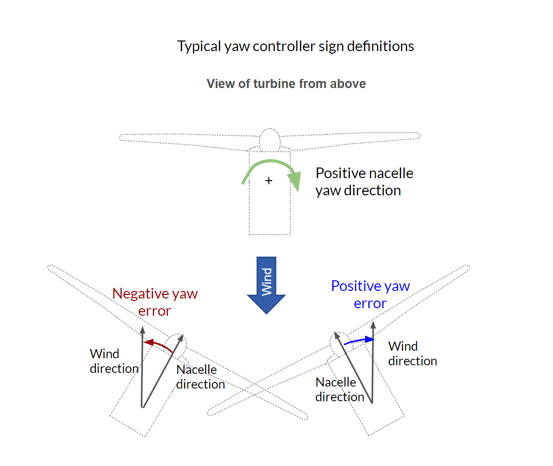
The turbine yaw controller drives yaw error to 0 on average
- Positive yaw error : nacelle will turn clockwise to correct itself towards zero yaw error
- Negative yaw error : nacelle turns counterclockwise to correct itself towards zero yaw error
To correct yaw misalignment, several methods can be used:
- Parameter change
- Mechanical method
- OEM controller solution
Sign Convention for yaw misalignment
Positive yaw misalignment implies the turbine needs to be rotated in the negative yaw direction (counterclockwise when viewed from above) to align with the wind on average.
Negative yaw misalignment implies the turbine needs to be rotated in the positive yaw direction (clockwise when viewed from above) to align with the wind on average.
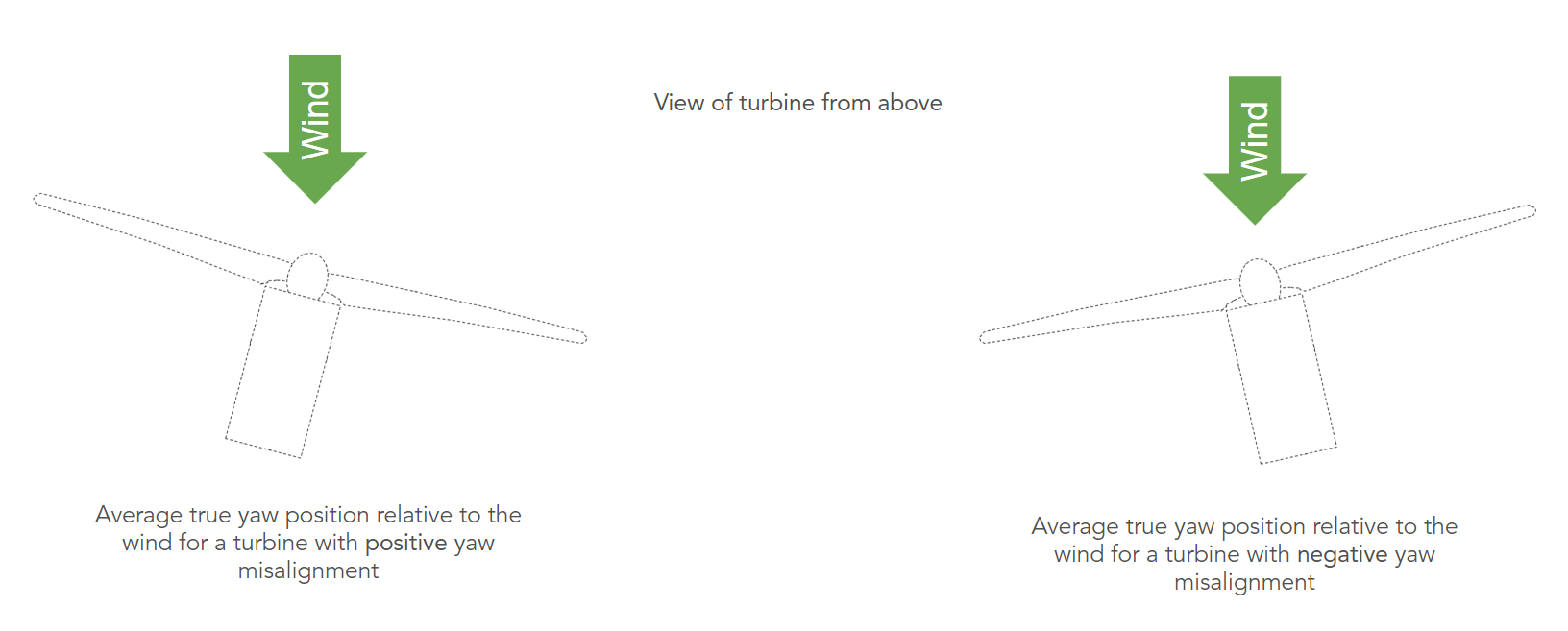 The correction is made by offsetting the yaw error measured from the wind vane or sonic on the back of the nacelle.
The correction is made by offsetting the yaw error measured from the wind vane or sonic on the back of the nacelle.
Method 1: Parameter Change
Controller parameter to adjust yaw misalignment are typically called something like “Yaw error adjust”, “YawErrAdj”, “Yaw error offset”, or “wind direction correlation”, depending on the turbine model. 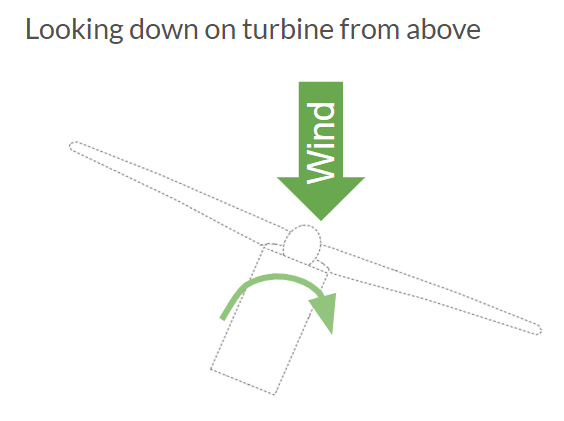
Some OEMs provide a single parameter while others provide an adjustment parameter table as a function of wind speed. If the parameter is a function of wind speed then the WindESCo offset should be applied to all wind speeds between cut-in and rated.
Most controllers add the adjustment offset to the yaw error measured on the wind vane such that inside the controller:
“yaw error” = “yaw error from sensor” + “yaw error offset”
In this case the yaw misalignment measured by WindESCo needs to be subtracted from the existing yaw error offset:
“new yaw error offset” = “previous yaw error offset” − “WindESCo yaw misalignment”
Some OEMs have different sign conventions or apply the parameter to the mean yaw error (rather than the sensor), so the equation may vary slightly. For example:
"new target yaw error" = "previous target yaw error" + "WindESCo yaw misalignment"
Don't worry though, WindESCo will help you through this step based on which OEM models you have at your site!
Method 2: Mechanical adjustment
When a nacelle yaw error adjustment parameter is not available in the turbine controller, the required yaw misalignment correction can be achieved by rotating the turbine’s primary wind direction measurement device (wind vane or sonic anemometer) the precise amount relative to the nacelle.
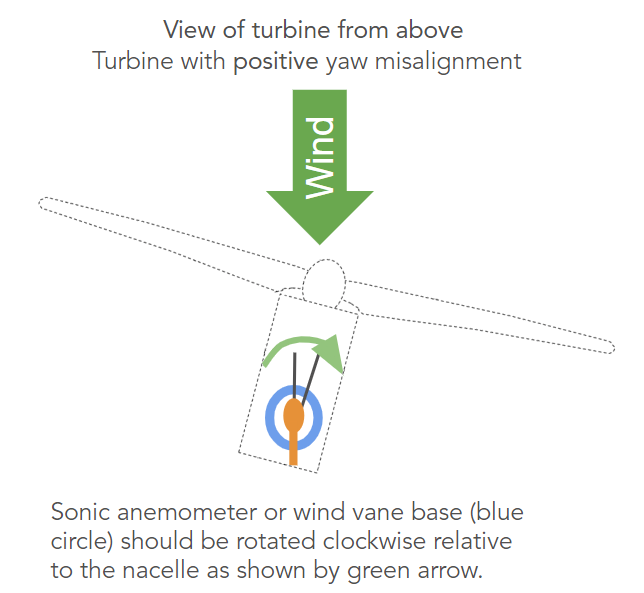
To correct positive yaw misalignment, the sonic or vane needs to be rotated in the positive yaw direction relative to the nacelle (clockwise when viewed from above). The turbine will then yaw in the negative direction to drive the yaw error to zero.
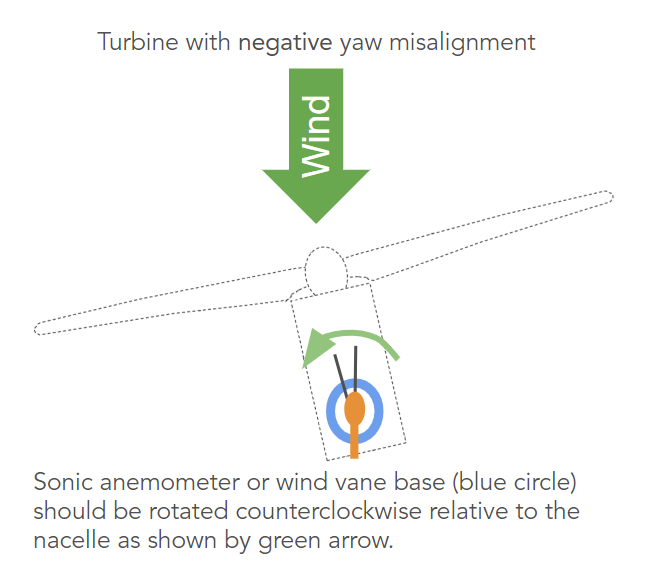
To correct negative yaw misalignment, the sonic or vane needs to be rotated in the negative yaw direction relative to the nacelle (counterclockwise when viewed from above).
Method 3: OEM Controller Solution
Several OEMs now have now developed controller-based solutions to static yaw misalignment (for example SGRE's "SmartYaw"). These are not solutions that WindESCo can implement directly, however the evidence from WindESCo's portal can be used to decide if purchasing these solutions are worth it - and if they're working as intended.
